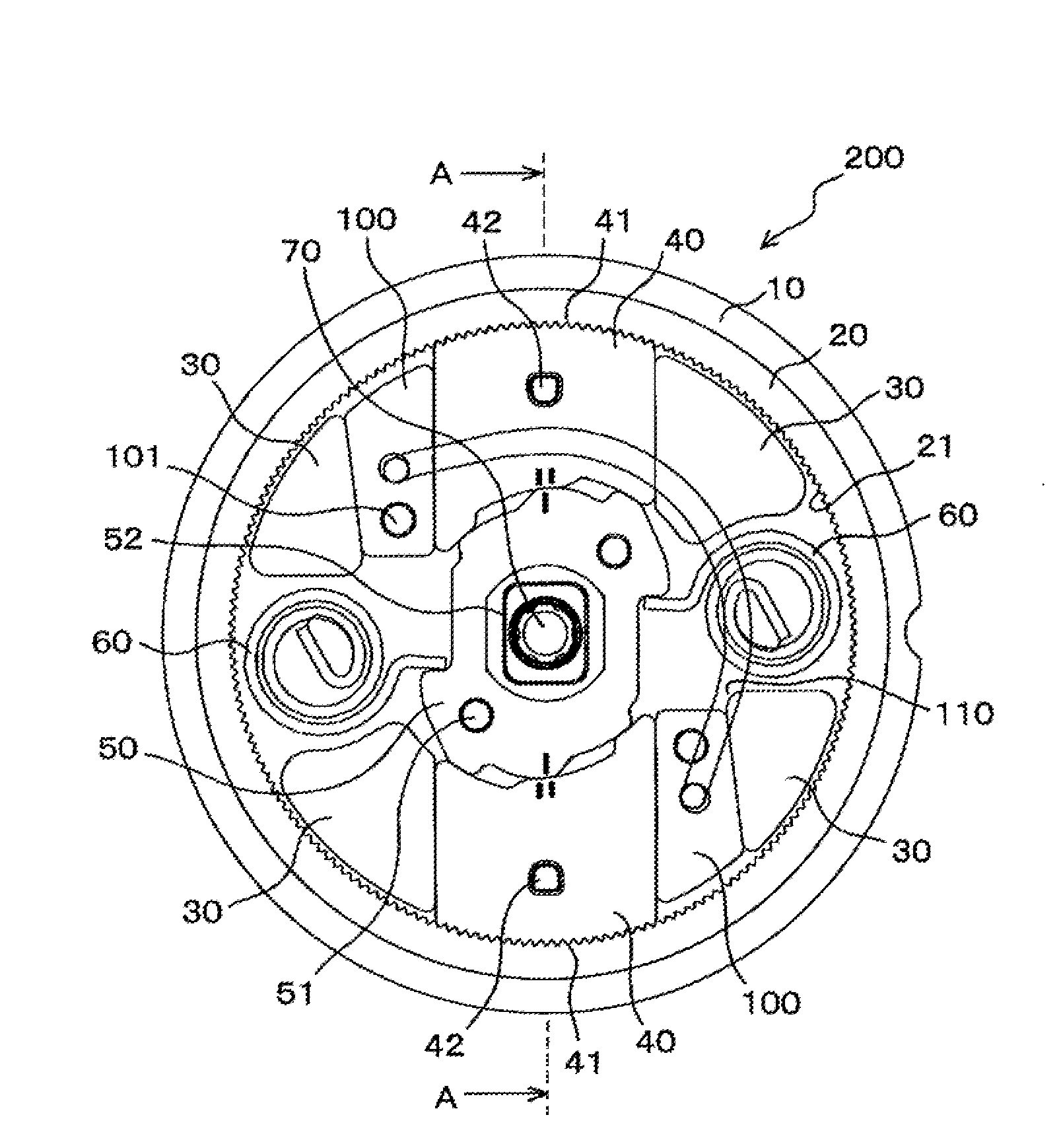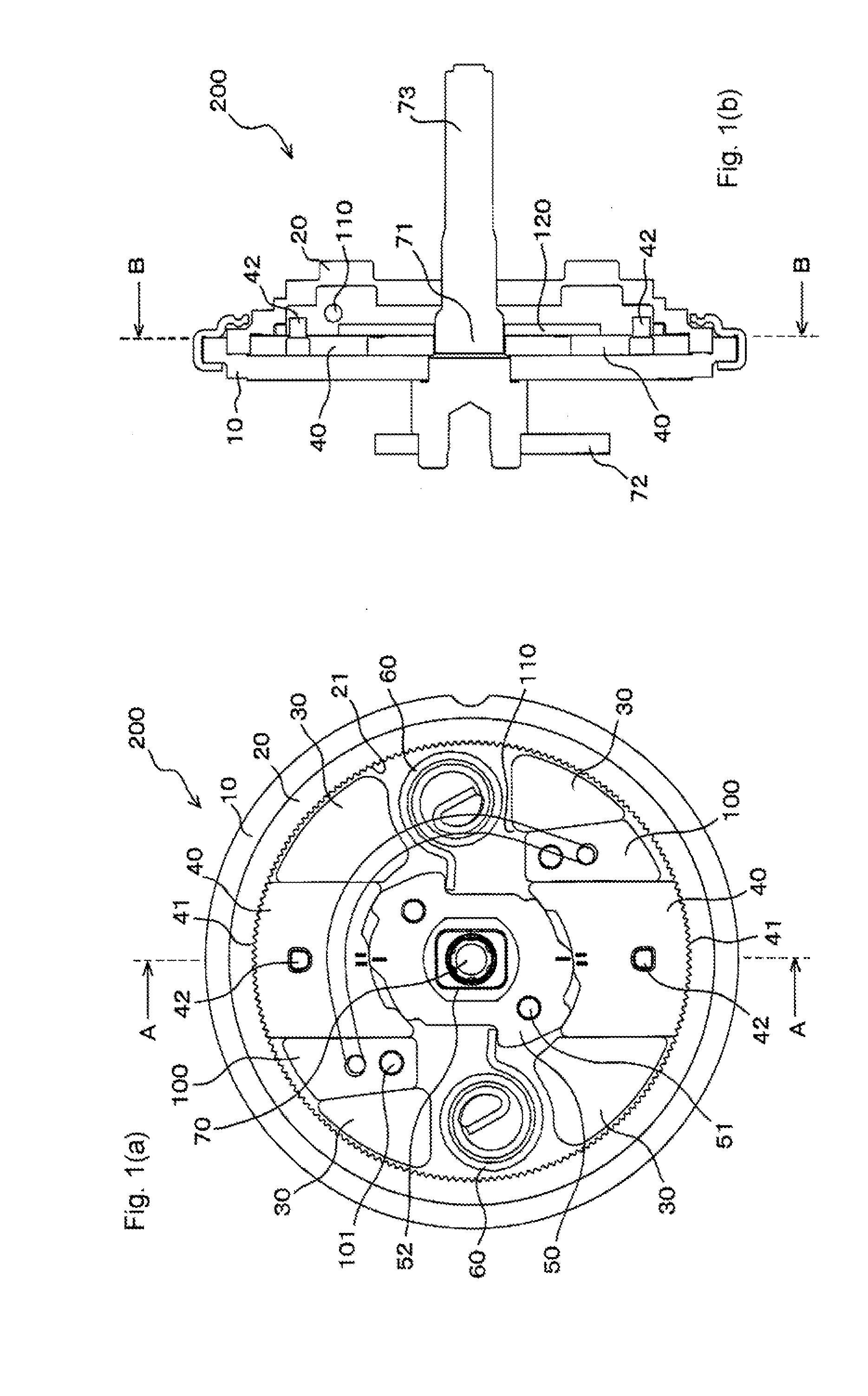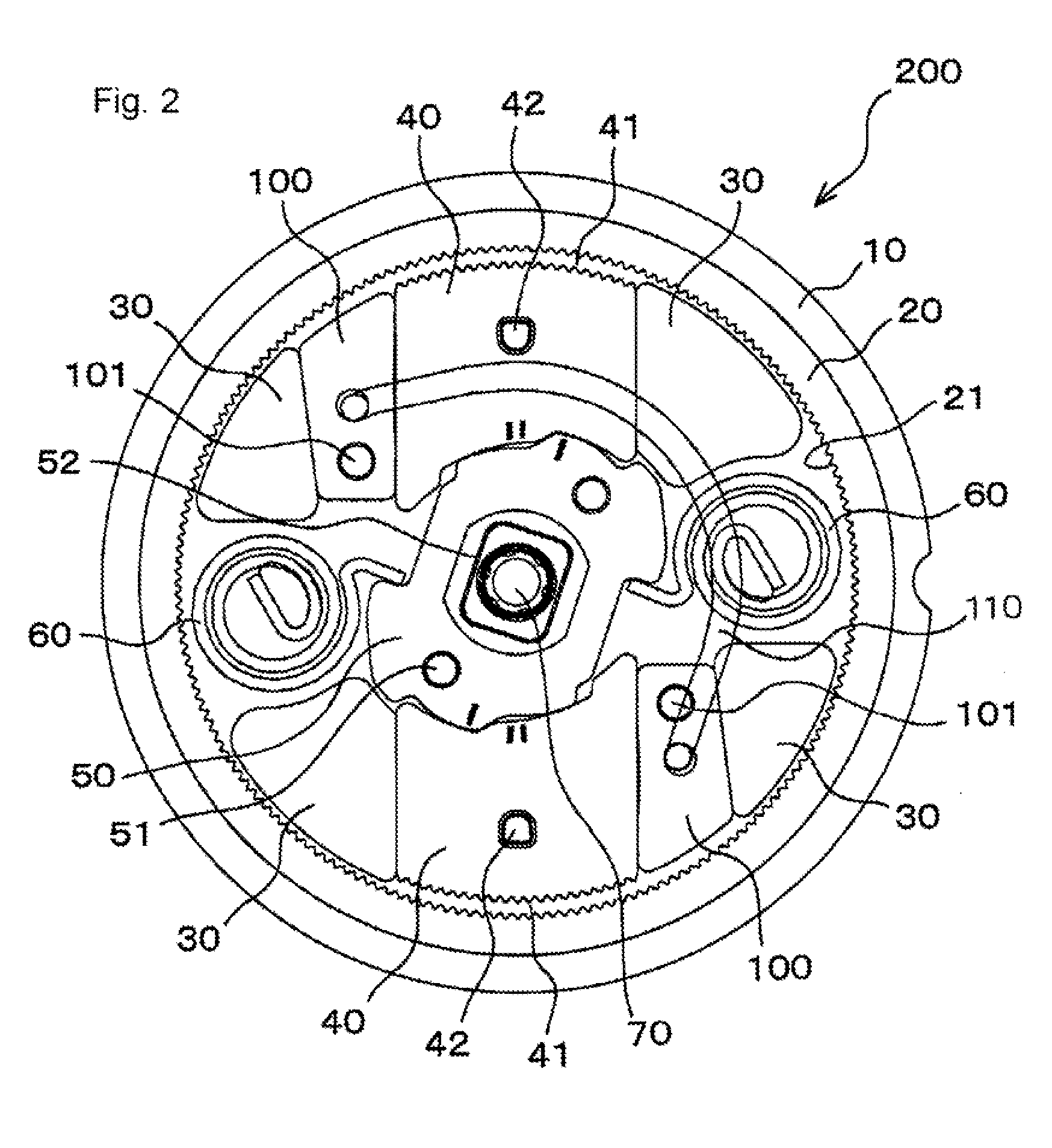Reclining Device
a technology of reclining device and reclining guide, which is applied in the direction of chairs, vehicle components, vehicle arrangements, etc., can solve the problems of locking gear pushing and deformation of fixed guides, and achieve the effects of reducing the number of components, reducing friction, and simplifying the structure of the devi
- Summary
- Abstract
- Description
- Claims
- Application Information
AI Technical Summary
Benefits of technology
Problems solved by technology
Method used
Image
Examples
embodiment 1
[0072]FIGS. 1(a), 1(b), 2, 3, and 4 illustrate a reclining device 200 according to a first embodiment. The reclining device 200 includes a base plate 10, a gear plate 20, fixed guides 30, lock gears 40, a cam 50, springs 60, a center shaft 70, movable guides 100, a spring 110, and a link plate 120. These components are described in more detail below.
[0073]The base plate 10 is a base of the reclining device 200. The base plate 10 is fixed to either of a seat cushion or a seat back of a vehicle seat. The base plate 10 has to be strong enough to support a load of the seat back and the weight of an occupant. Therefore, the base plate 10 is formed of steel plate and processed by press working or cutting. In the first embodiment, the base plate 10 is has a circular exterior shape formed by press working a steel plate. The base plate 10 is also formed with fixed guides 30. The fixed guides 30 are fixed to the seat cushion.
[0074]The gear plate 20 is assembled with the base plate 10 with the...
embodiment 2
[0086]FIG. 5 illustrates a reclining device 200 according to a second embodiment. The reclining device 200 is the same as that of the first embodiment in many respects. Particular points of difference are described, but descriptions of similar features are omitted. In the second embodiment a vertical torsion spring 60 imparts a rotational force to the cam 50 as shown in FIG. 5. In this embodiment, the link plate 120 in particular is not shown for the convenience of description. The reclining device 200 may though include the link plate 120. In this second embodiment, the single torsion spring 60 imparts the rotational force to the cam 50. The reclining device 200 can be constructed of fewer component parts than those in the first embodiment.
embodiment 3
[0087]FIG. 6 illustrates a reclining device 200 according to a third embodiment. The reclining device 200 according to this embodiment is the same as the first embodiment in many respects. Points particularly different from those of the first embodiment are described here, but descriptions of identical features are omitted. In this third embodiment, a pair of torsion springs 110, ends of which are attached to the pair of movable guides 100, impart a rotational force to the cam 50 as shown in FIG. 6. Accordingly, the pair of torsion springs 110 is engaged with the cam 50 and the pair of the movable guides 100. The pair of torsion springs 110 is disposed on a diagonal line symmetrically with respect to the center shaft 70. The cam 50 is thereby imparted uniformly with a rotational force from two directions. Consequently, in this embodiment the cam 50 is prevented from being driven by a force in an eccentric direction. The cam 50 can thus be rotated around the center of the base plate ...
PUM
 Login to View More
Login to View More Abstract
Description
Claims
Application Information
 Login to View More
Login to View More - R&D
- Intellectual Property
- Life Sciences
- Materials
- Tech Scout
- Unparalleled Data Quality
- Higher Quality Content
- 60% Fewer Hallucinations
Browse by: Latest US Patents, China's latest patents, Technical Efficacy Thesaurus, Application Domain, Technology Topic, Popular Technical Reports.
© 2025 PatSnap. All rights reserved.Legal|Privacy policy|Modern Slavery Act Transparency Statement|Sitemap|About US| Contact US: help@patsnap.com



